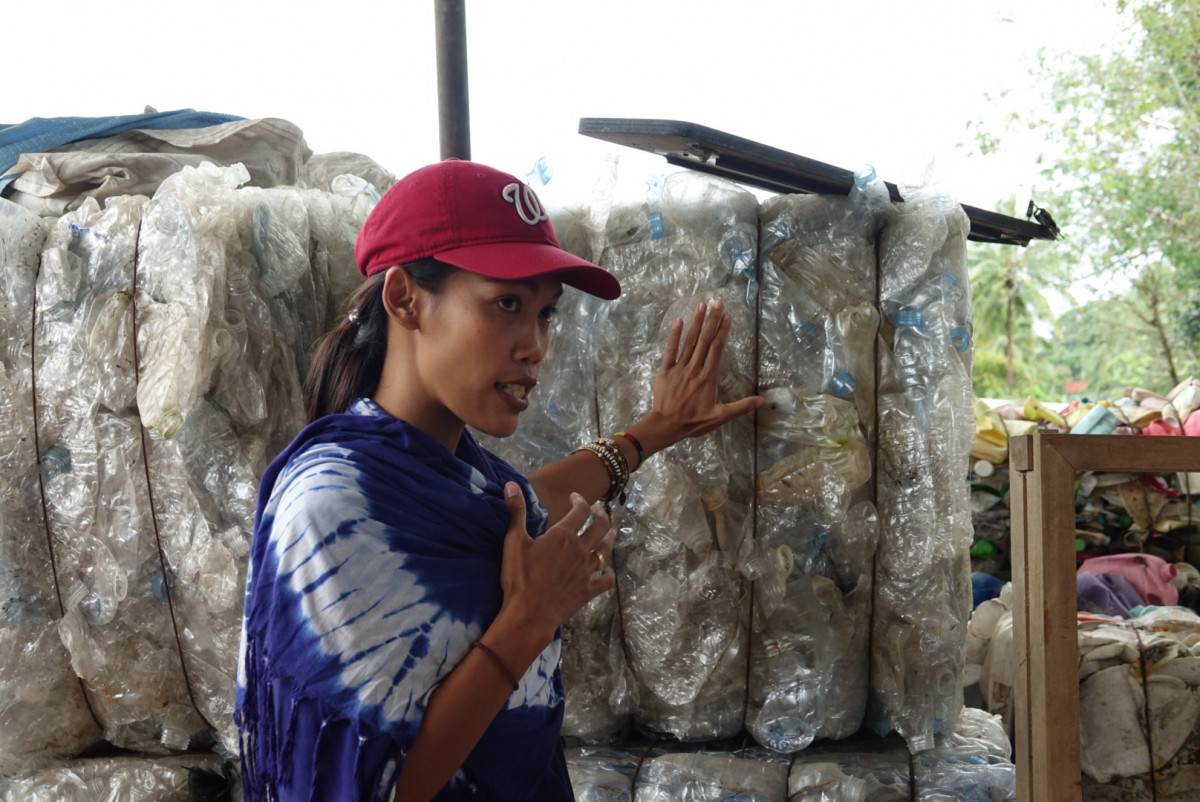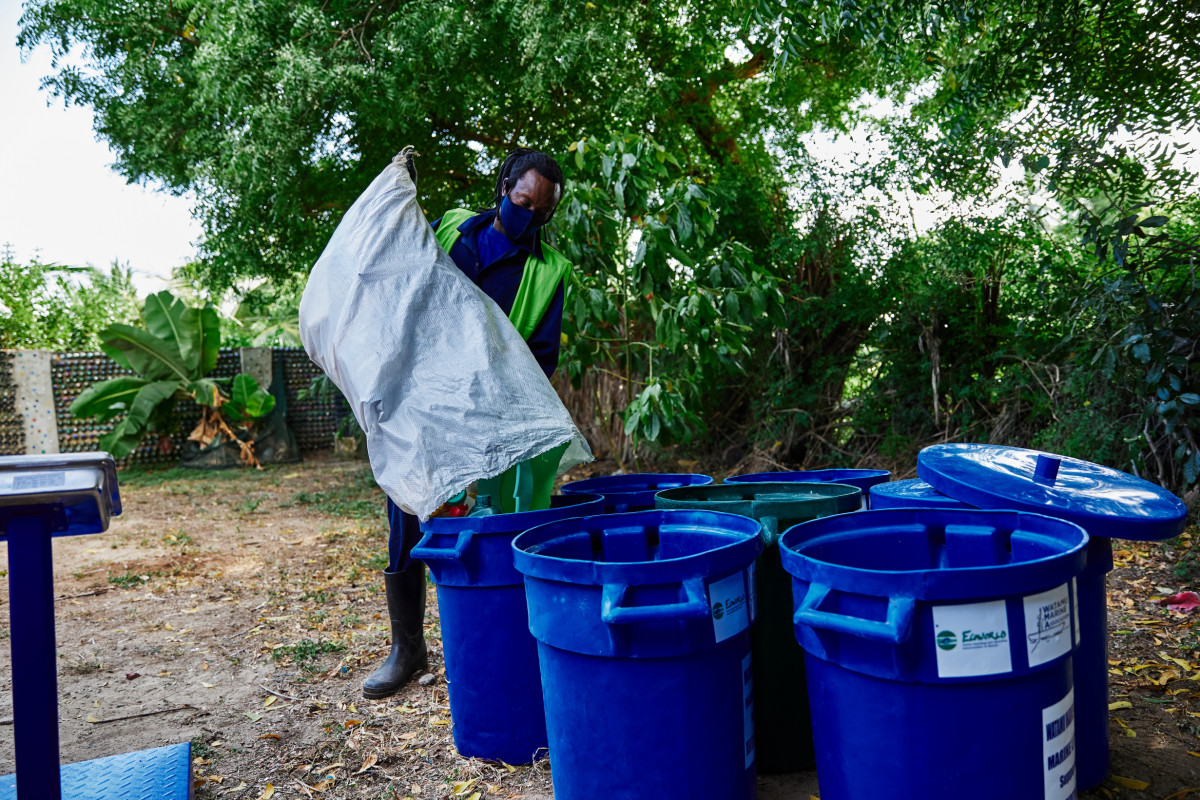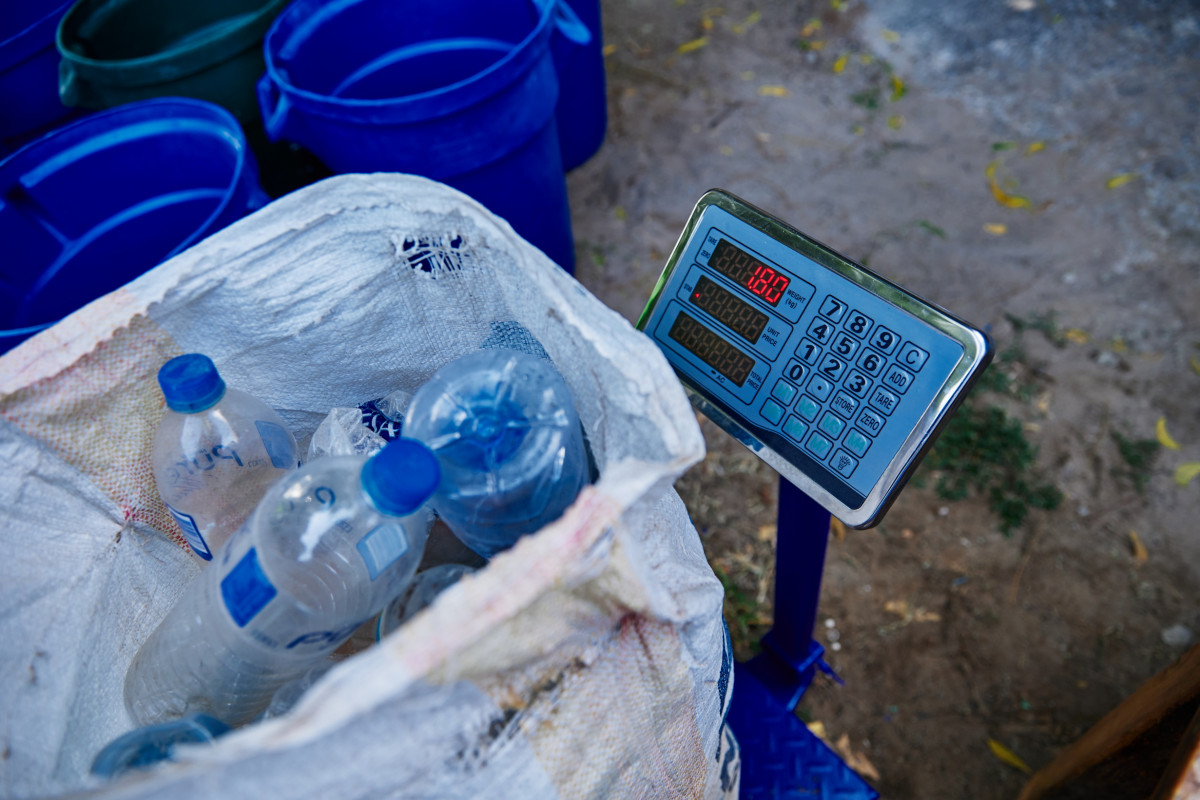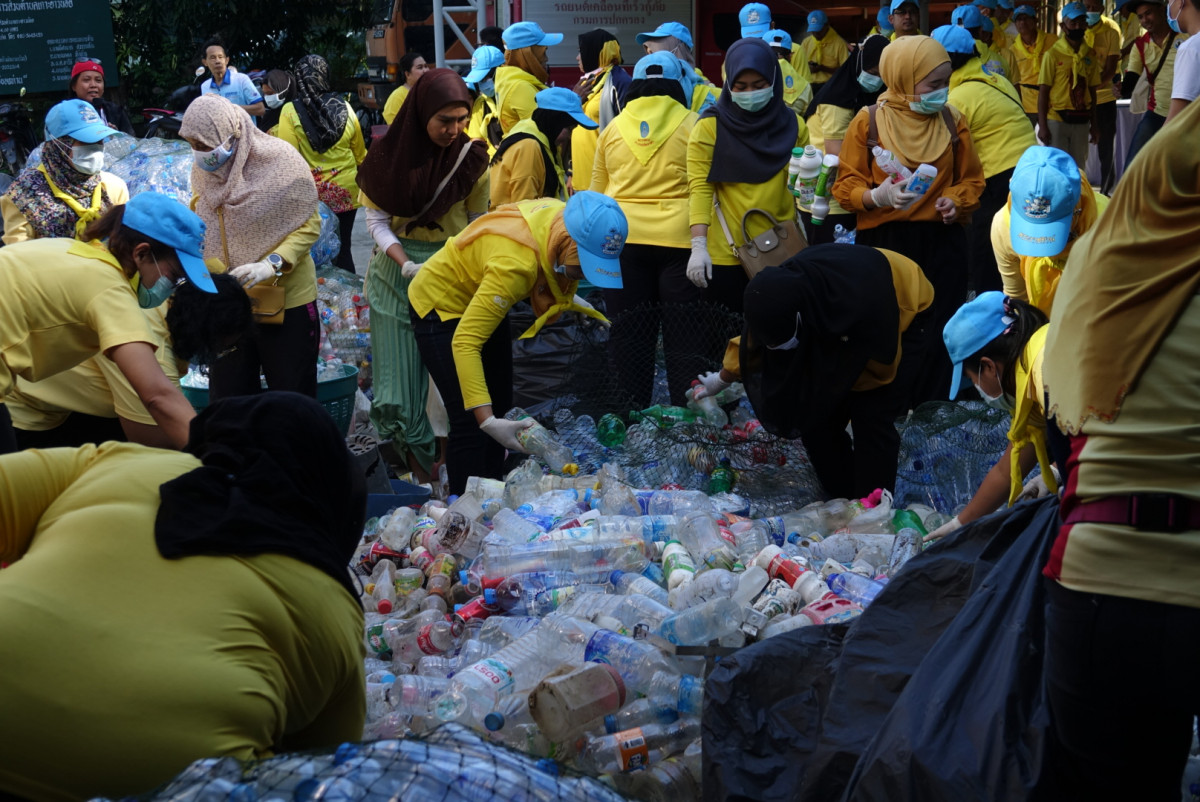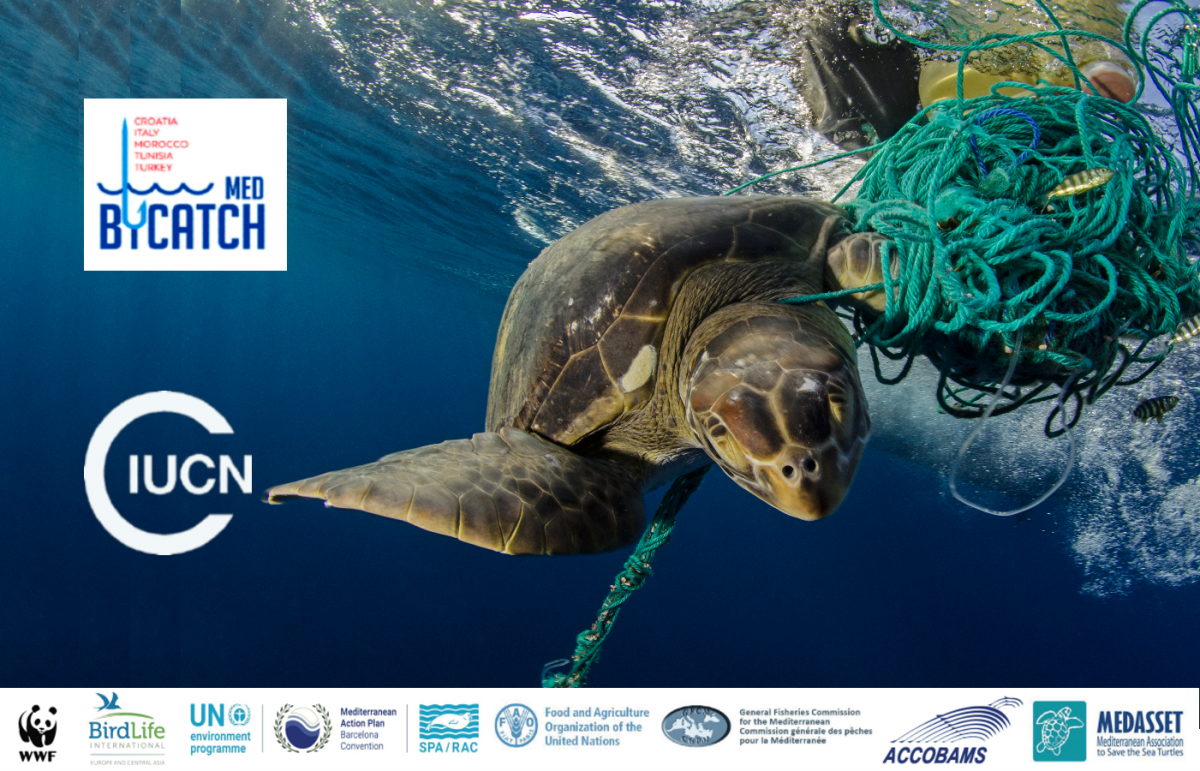High impact, small scale with MARPLASTICCs projects: the results of circular economy work in the fight against plastic pollution
MARPLASTICCs projects have focused on the circular economy, meaning less waste, more value. The generation of a new dynamic economy to heal the ocean and benefit communities is the goal. We show the successful results of five different projects in Africa and Asia.
Less Waste More Value – About the IUCN MARPLASTICCs circular economy projects
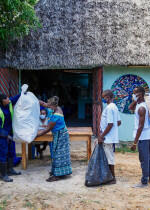 Photo: White Rhino films
Photo: White Rhino films
In February, 2021, MARPLASTICCs released a series of video stories covering the circular economy projects in Kenya, Mozambique, South Africa, Thailand and Viet Nam, as well as a 24-minute film covering the three African countries.
It is important for us to highlight the work of these small-scale initiatives and give a voice to people working towards circularity at the local level. Often in developing economies and economies in transition, the most urgent and cost-effective approach to minimizing plastic waste leakage lies in separation of waste at source, increased collection and transport infrastructure, and safe processing, treatment and management. A focus on waste management presents an opportunity for greater involvement of communities in the Circular Economy, which is often still disregarded in practice.
Peter Manyara, Program Manager, Coastal and Ocean Resilience (COR), IUCN East and Southern Africa
The objective of these projects is to improve circularity at the project locations and to encourage the uptake of models such as Extended Producer Responsibility. Each project is working toward several Sustainable Development Goals, as plastic pollution cuts across the spectrum of economic, social and environmental issues.
Some plastics, such as PET bottles and nylon plastics, are commonly found in the marine environment. The MARPLASTICCs supported initiatives incentivise the diversion of these plastics from reaching the marine environment, so they can be upcycled and used in new products – from artifacts to road pavers, and more. In each case, the projects are mobilising communities, creating new livelihood opportunities for disadvantaged groups, and are reducing the amount of plastic going into the ocean and littering along beaches.
Healthy Oceans, Healthy Marine Wildlife, and Healthy Humans
Plastic pollution has a significant social, economic and environmental impact. Every day, around 27,000 tonnes of mismanaged plastics leak into the ocean. That is equivalent to almost 10 million tonnes per year (Boucher & Friot, 2017), a quantity that is expected to double in the next decade if no action is taken (Geyer et al., 2017; Jambeck et al., 2015). This has major adverse impacts on the health of ocean ecosystems, the integrity of food supplies, and livelihoods. Plastic leakage also comes with an economic cost: the total natural capital cost of plastics in the consumer goods industry has been estimated at US$ 75 billion, of which US$ 40 billion was related to plastic packaging, exceeding the profit pool of the plastic packaging industry (UNEP, 2014).
This issue of plastic pollution is caused by a multitude of factors, including but not limited to: unsustainable economic systems and behaviour patterns, non-existent or unenforced legislation, inefficient waste management systems and multiple layers of leakage sources, some of which have been identified in the MARPLASTICCs hotspotting work completed in 2020. These drivers require a multifaceted approach to finding solutions to address plastic pollution and leakage. Most efforts to minimise and mitigate the impacts of plastic pollution have focused on tackling the sources on land, in rivers and in coastal areas.
In the MARPLASTICCs Circular Economy projects in 2020, in Asia, the approximate total plastic pollution that has been diverted from the ocean was 141,500 kg. In Thailand the amount of plastic collected since January was 121,305 kg and in Viet Nam, the ReForm Center collected 20,228 kg of plastic waste. In Africa, starting with Kenya, the amount of plastic marine litter removed from the project’s marine park beaches was 32,944 kg. The project in Mozambique collected and managed 6,376 kg of plastic waste. Finally, in South Africa, the amount of avoided plastic leakage into Durban Bay was 21,081 kg. The regional total of plastics diverted from the ocean was approximately 60,000 kg. These results show great impacts across all five countries.
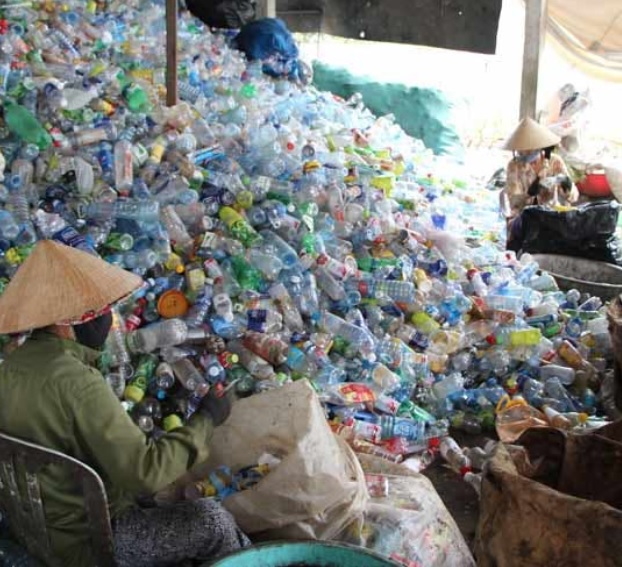 Photo: IUCN Vietnam
Photo: IUCN Vietnam
If a Circular Economy approach were fully implemented and the goal to Close The Plastic Tap was achieved, the impacts of plastic pollution on marine ecosystems would be drastically reduced. Effects such as plastic ingestion, suffocation and entanglement of seabirds, whales, fishes and turtles; the spread of invasive marine species; and the smothering of coral reefs would be alleviated. This scenario would lead to improved ocean health, which benefits human health and the health of marine species. Several chemicals used in the production of plastic materials are known to be carcinogenic and to interfere with the body’s endocrine system, causing developmental, reproductive, neurological, and immune disorders in both humans and wildlife.
About Circular Economy
Circular Economy looks beyond the current take-make-waste extractive industrial model and redefines economic growth, focusing on positive society-wide benefits. It entails gradually decoupling economic activity from the consumption of finite resources, and designing waste out of the system. Underpinned by a transition to renewable energy resources, the circular model builds economic, natural, and social capital. The MARPLASTICCs Circular Economy projects and these video stories are designed to share the possibility of a better future with less plastic waste.
About MARPLASTICCS
In 2017, with generous support from the Swedish International Development Cooperation Agency (Sida), IUCN launched the Marine Plastics and Coastal Communities initiative (MARPLASTICCs), an initiative in Africa and Asia in five countries: Kenya, Mozambique, South Africa, Thailand, and Viet Nam. As part of the Capacity pillar, MARPLASTICCs has been supporting existing, small-scale circular economy initiatives that aim to reduce the amount of plastic leaking into the marine environment. MARPLASTICCs has provided a financial grant of up to USD 50,000, in each target country.
To learn more, please visit: https://www.iucn.org/theme/marine-and-polar/our-work/close-plastic-tap-programme/marplasticcs
Supported by Sida
